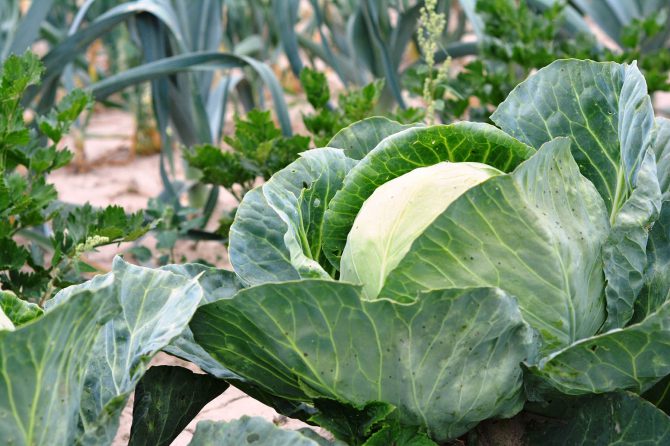
Did you know the USDA reports cabbage is the second most economical vegetable, (after potato), on your grocery list? With lots of beneficial vitamins and nutrients, you’ve got a munch-worthy veggie to bring to the table.
Humble Head of Cabbage
Say hello to a most-underused vegetable with a list of health benefits that may surprise you. These cruciferous vegetables derived their name from the shape of their flowers, which have 4 petals resembling a cross. This family of vegetables also includes cauliflower, broccoli, bok choy, kale, kohlrabi, collard and mustard greens, and of course, Brussels sprouts.
Some may find Brussels sprouts or broccoli bitter. Substitute cabbage, since it has all the health benefits of other cruciferous vegetables, but with a milder flavor.
Cabbage is known for its high antioxidant content like vitamin C, vitamin K and other nutrients whose names you may not recognize. Researchers have found 20 different flavonoids and 15 different phenols with antioxidant properties. Cyandins in red or purple cabbage protect against cholesterol from clogging the arteries. They lower inflammation and can prevent heart disease. Sinigrin is a sulfur compound that has been shown to protect against cancer. Studies show those who consume cabbage regularly have the least risk for developing diabetes. Cabbage is high in carotenoids like lutein, which helps protect your eyes from developing macular degeneration as you age.
You don’t have to know the names of all the good things in your cabbage–just eat it! To get the most benefit, try to consume ½ to ¾ cup cooked or 1 ½ cup raw cabbage per day at least 5 days per week.
This is pretty easy to do since there are so many ways to prepare cabbage. Traditional methods of steaming or boiling cabbage can extract flavor and nutrients. Sautéing or roasting bring out sweetness and texture while retaining nutrition. Just roast a side dish of cabbage with a little olive oil. Cook cabbage in soups or stews. Use the leaves (cooked or raw) like bread or tortillas to hold sandwich fillings, meat, beans or rice dishes, or bake up delicious stuffed cabbage rolls. Cabbage can be used to make raw slaw salads with vinegar or dressing, or just tossed it into raw green salads. It’s easy to ferment cabbage to make sauerkraut. All you need is cabbage, salt and about a week’s worth of patience. The OSU Extension office has all these recipes for kraut, relishes, and other recipes using cabbage.
Not only is cabbage a superstar in promoting health, it is also affordable. The US Department of Agriculture (USDA) has found cabbage to be the 2nd most economical vegetable (potatoes came in 1st). One head of uncut cabbage can last in the refrigerator for several weeks. Just peel off wilted layers to reveal perfect leaves underneath. Cut in half and remove the white core. Then slice and cook or enjoy raw. However you use it, add cabbage to your list of super foods.
Shopping Tips
A good cabbage should feel heavy for its size.
A bag of shredded cabbage will save you time, but usually costs you more than an uncut head and might not keep as long.

Sauteed Cabbage Recipe
Ingredients:
1 1⁄2 tablespoons margarine
1⁄2 head cabbage, shredded (about 6 cups) 2 carrots, grated (about 11⁄2 cups)
1⁄2 teaspoon salt
1⁄4 teaspoon pepper
Directions:
1. In a large skillet heat margarine until foamy. Add cabbage and carrots.
2. Sauté over high heat until tender but crisp, about 4-6 minutes.
3. Add salt and pepper and serve warm.
4. Refrigerate leftovers within 2 hours.
Notes: Enjoy the sweet mild flavor of cooked cabbage or spice it up with your favorite seasoning!
PDF recipe download includes shopping and cooking notes plus Tuna Cabbage Salad and Dutch Red Cabbage with Apples recipes.
“Humble Head of Cabbage” article by Stephanie Polizzi, MPH, RDN. Recipe and fact sheet provided by Oregon State University Extension Service with Healthy Bytes Community Networking Initiative.
You may also like our blog post with spinach recipes.
Leave a reply
